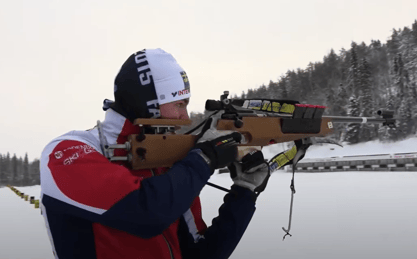The assignment was divided into three parts:
1. To determine the historical background and causes of any cold-related issues through a questionnaire.
2. To increase the biathletes' knowledge about how cold affects performance, as well as how to better prepare and protect oneself from risks like frostbite.
3. Individual tests/measurements of blood circulation in the hands.
The results were presented in a report to the head coach and as a brief concluding presentation for the biathletes. In summary:
The significant difference between men and women can be explained by the fact that most research is based on a male norm (with 18-24-year-old men constituting the medical test groups). Therefore, materials are also more tailored for men.
We hope to continue this development work. With limited resources, we can achieve a lot together. We are committed to providing the best possible conditions for performing in the cold.
The survey included questions related to hand circulation, potential cold issues, symptoms, symptom severity, and protective equipment, meaning the competition gear.
The survey evaluation showed:
- Incidents of frostbite, white fingers, tingling, and numbness.
- Perceived impaired blood circulation in hands and feet.
- Cold causing issues, including respiratory problems and reduced sensation.
- Discomfort working in the cold, with fingers and toes primarily affected.
- Sensitivity to cold.
- Cold-weather clothing is considered somewhat inadequate.
The time allotted for lectures was limited to one hour, as it could not infringe upon training time. The lectures covered a problem description: What is cold? How is it defined? Effects of wind, wind speed, and humidity, descriptions of the effects and risks when working in the cold, and preventive measures.

- Two groupings are evident: warm hands (with an average temperature of about 30°C) and cold hands (with an average temperature below 30°C).
- Warm hands recover quickly after exposure to cold.
- Cold hands do not return to their original temperature within 10 minutes.
- The left hand is generally somewhat colder than the right hand.
- Women generally have colder hands than men and have a poorer recovery ability.
- Zones with impaired circulation are presented in a pedagogical manner.
The assignment was carried out on two occasions, in November 2009 and November 2010, during the biathletes' training camp in Muonio, Finland. The target group in the first instance was the biathlon Olympic national team, and in 2010 it was young upcoming national team aspirants.